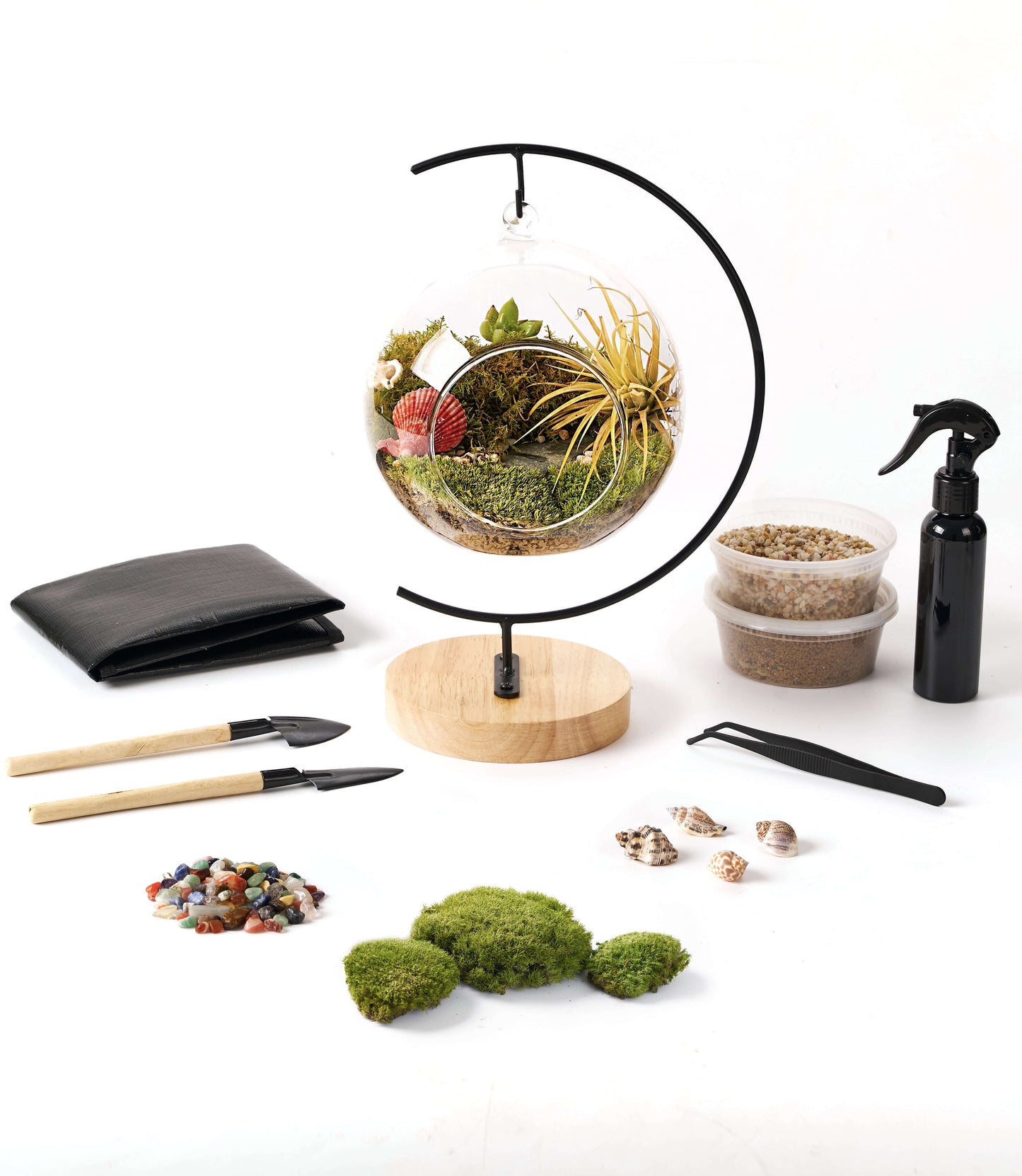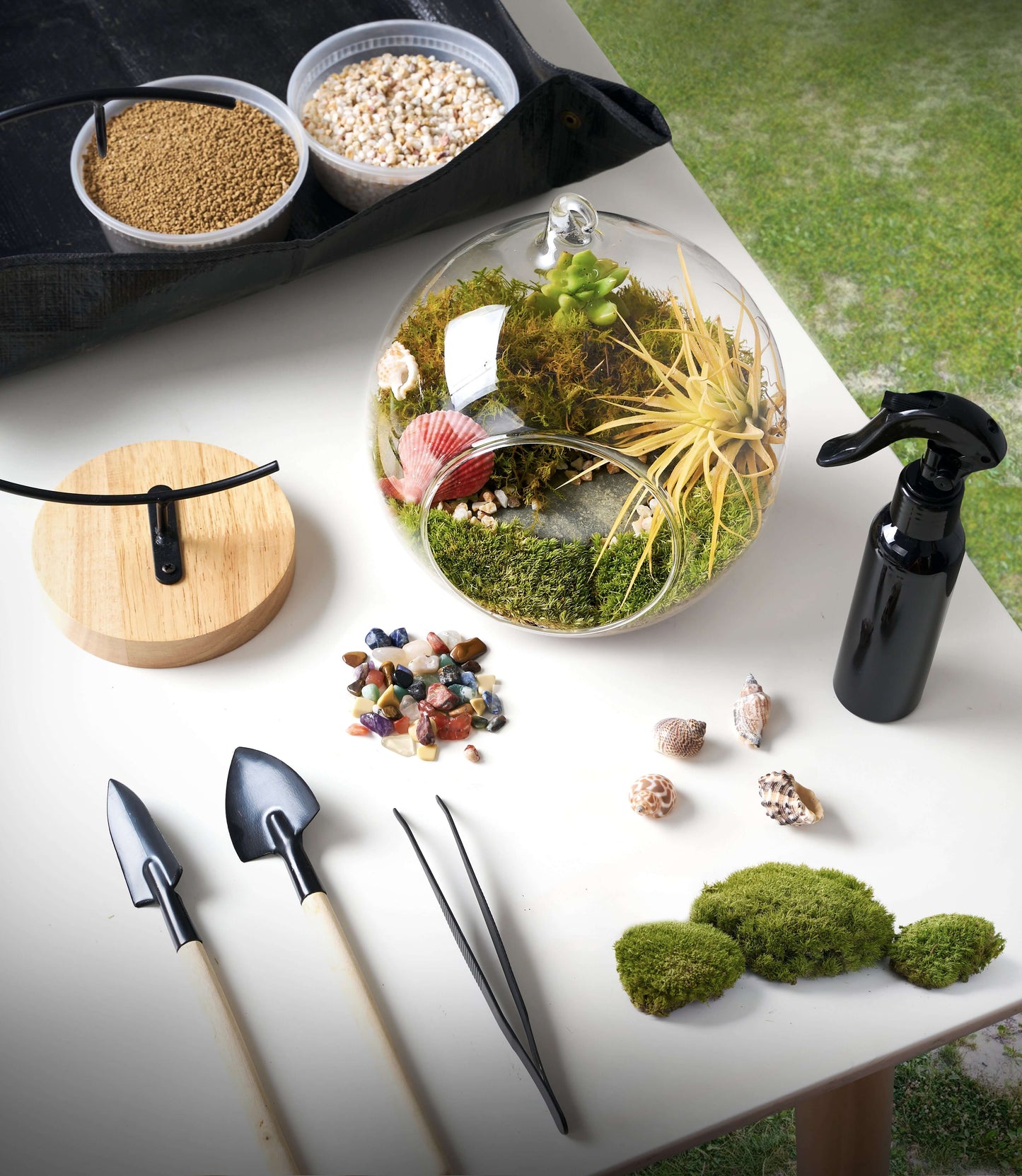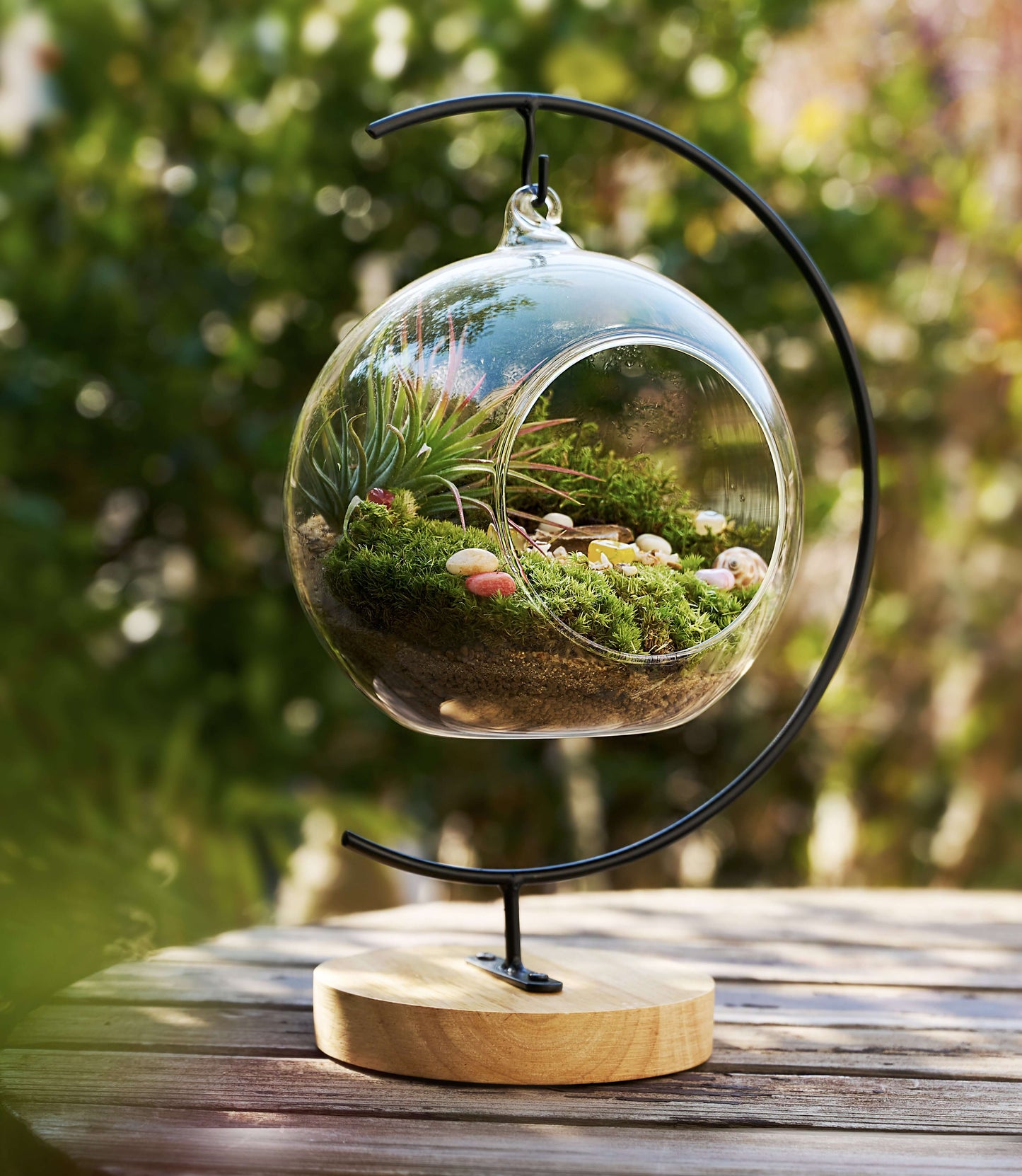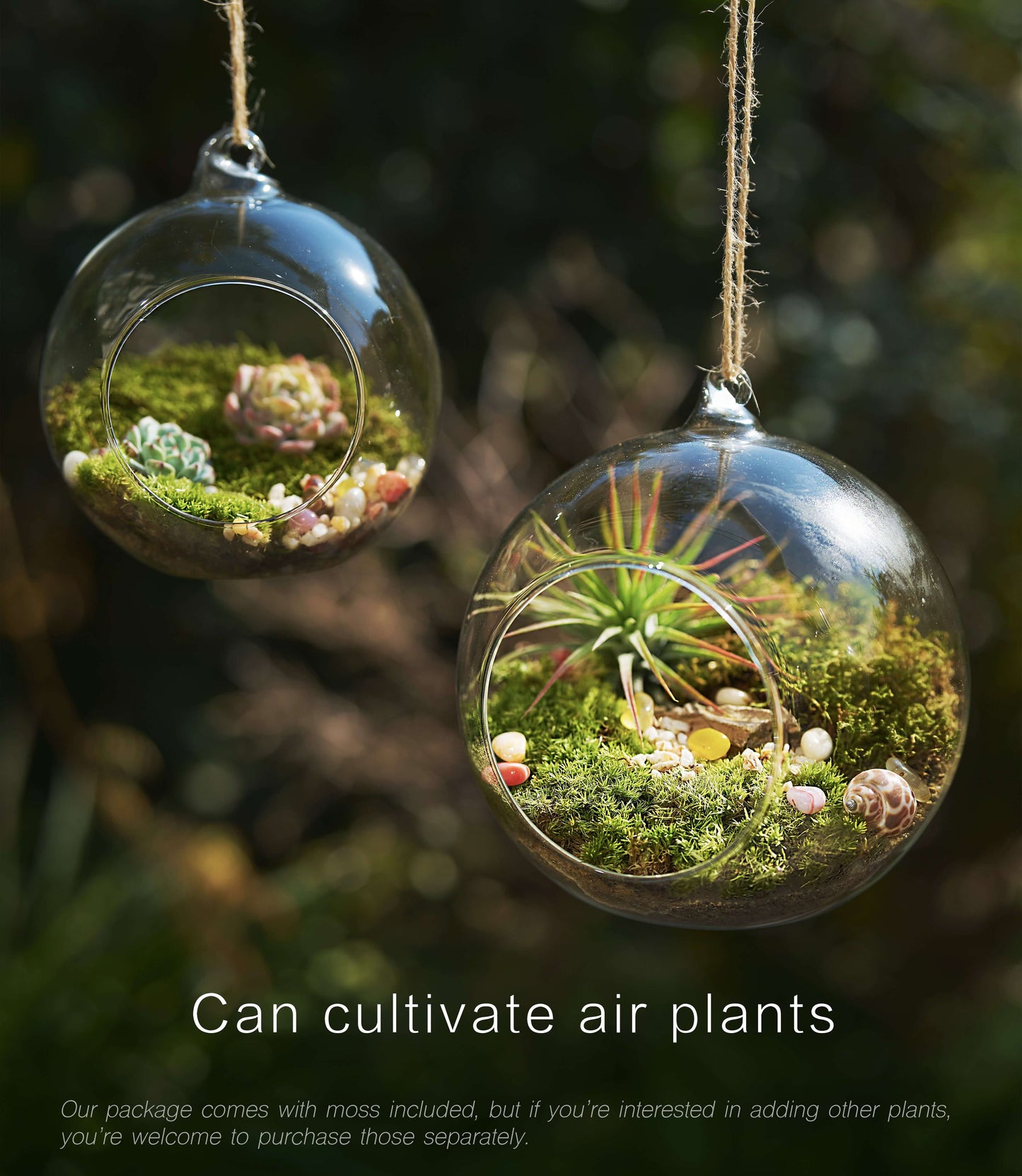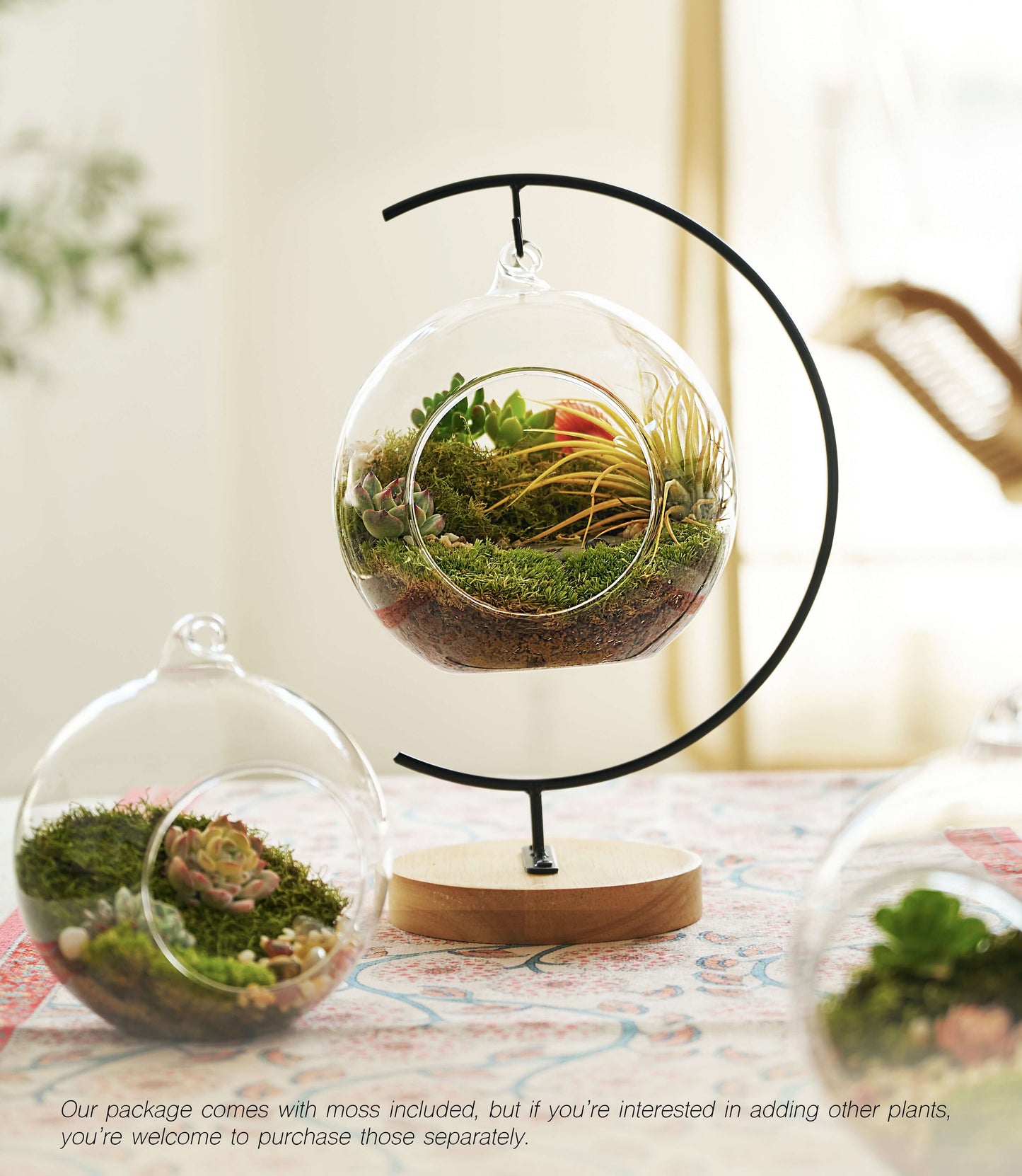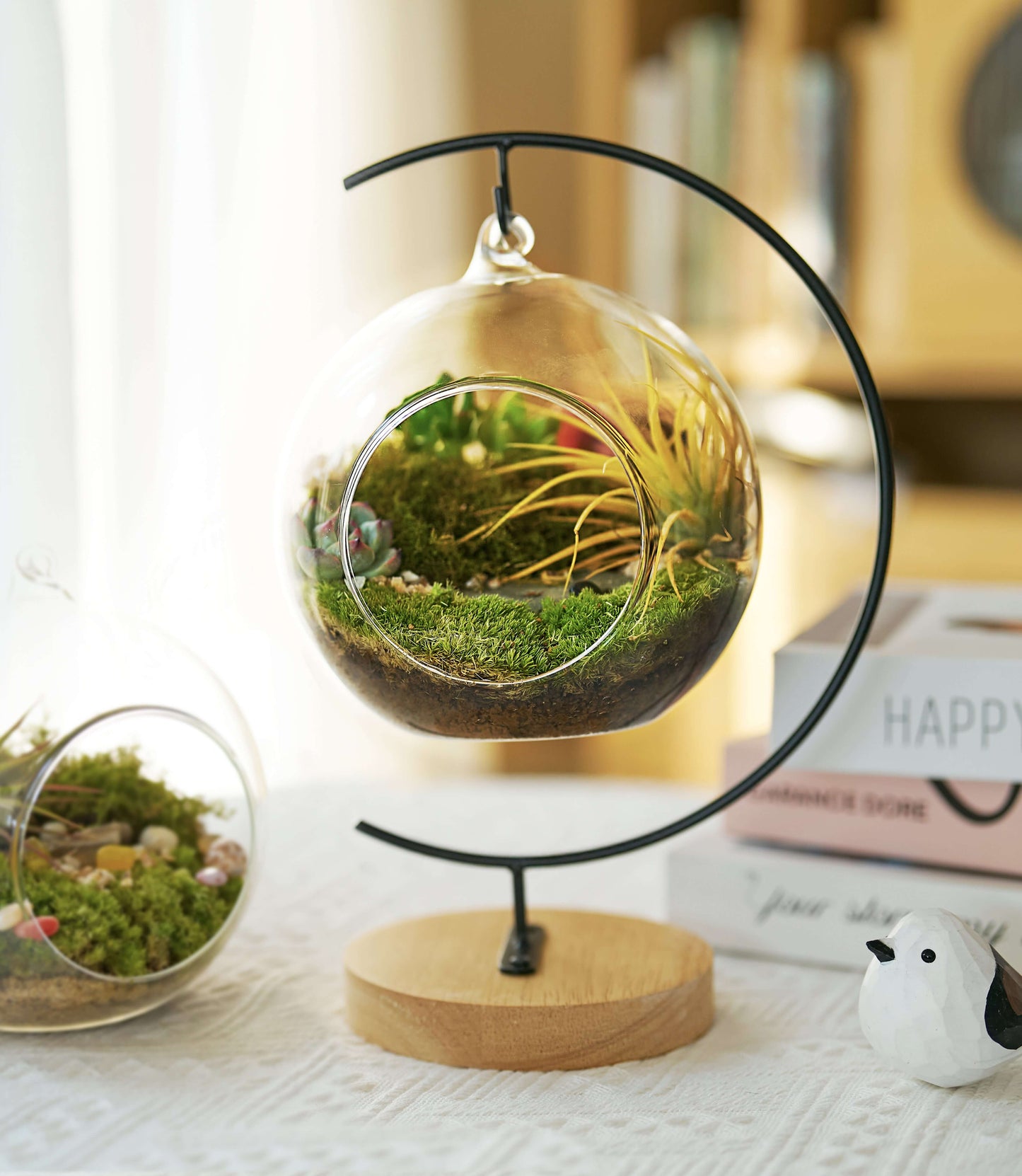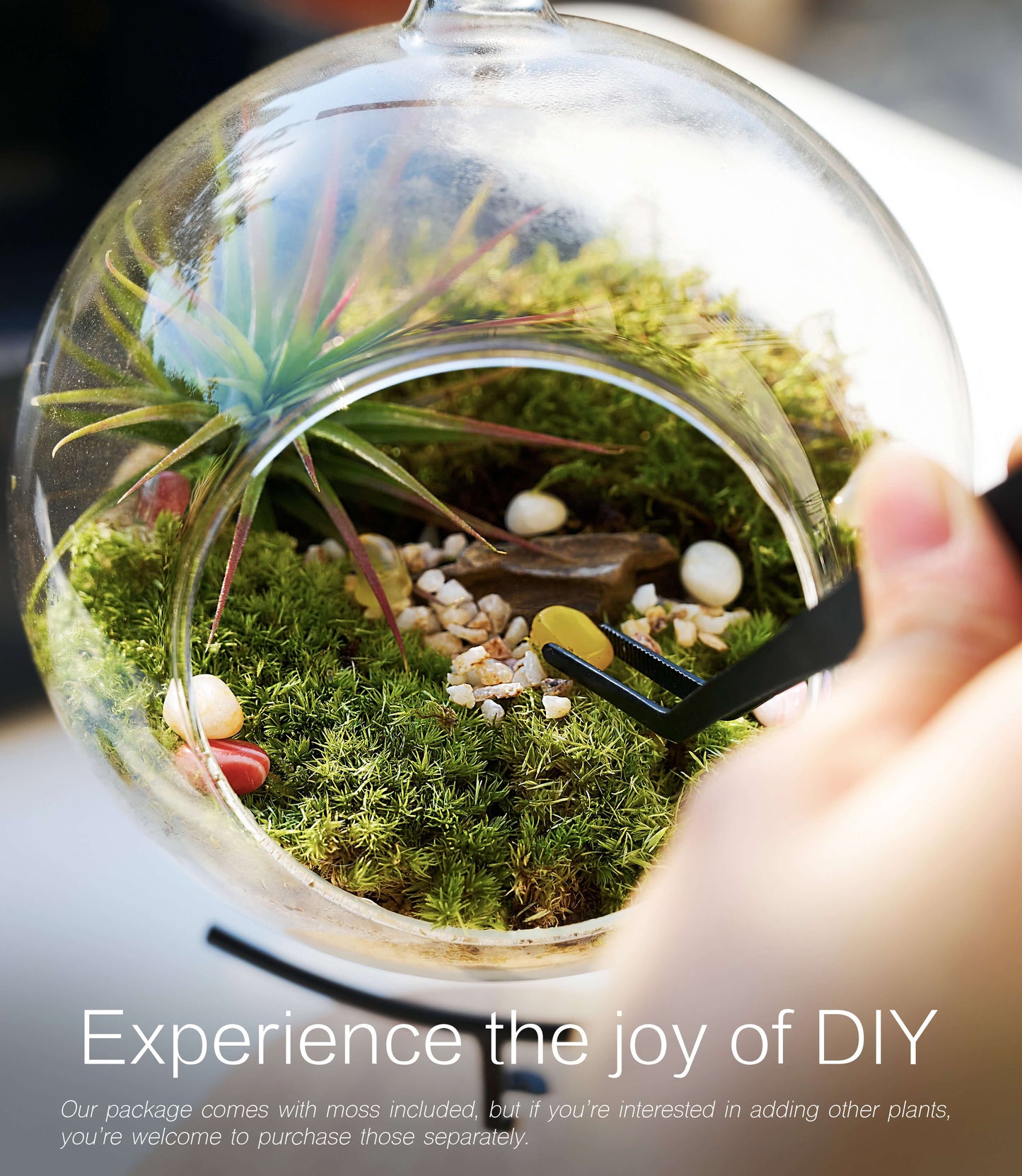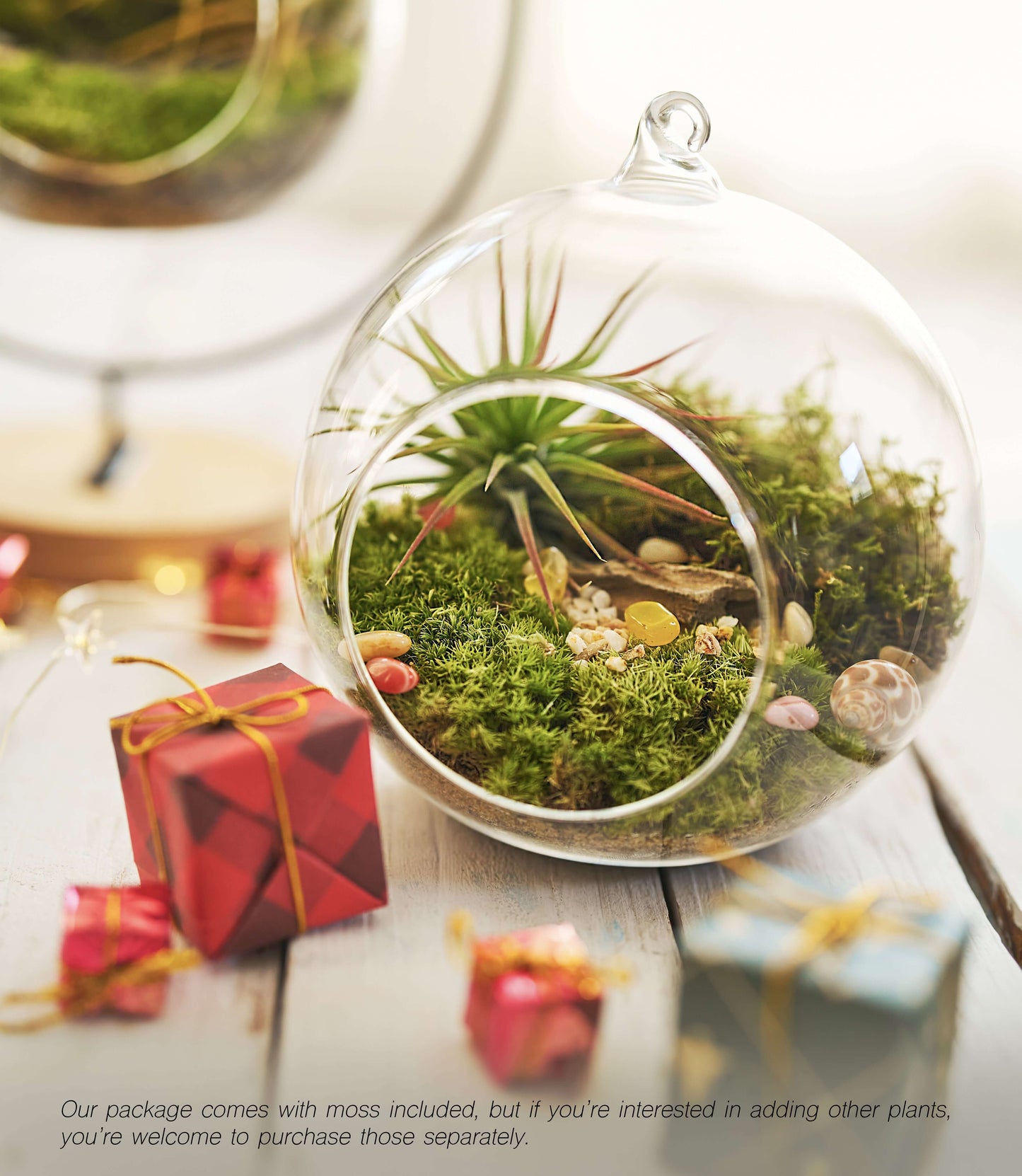Live Moss Care Guide – Aesthetic Composition and Style Matching (Q81–Q100)
Aesthetic Composition and Style Matching
How to pair moss with glass containers, stones, or wood? How to match styles for terrariums, bonsai, or reptile tanks? In this section, you’ll find inspiration and practical tips to compose layouts, combine moss with other natural elements, and create unique styles that fit your space.
Q81|What kind of plants is moss suitable for co-culture?
A: It is recommended to co-culture with moisture-loving plants, such as ferns, air bromeliads and small foliage species. Avoid planting with succulents or cactus in the same pot, the ecological needs are very different.
Q82|Can moss be paired with simulated plants?
A: Yes. It is recommended to choose the simulation plant material with real texture and natural color, and pay attention to the texture coordination between moss surface and decorative elements.
Q83|Is moss suitable for minimalist style?
A: It is very suitable. It is recommended to match with white sand, volcanic stone, pottery, plain container and other materials to highlight the aesthetics of “white space” and “quiet observation”.
Q84|What kind of space is moss suitable for?
A: It is widely used in small-scale spaces such as tea rooms, study rooms, entrance halls, office desks, display windows, etc., to create a sense of serenity, moistness and natural atmosphere.
Q85|Can moss be used as a jigsaw puzzle?
A: Yes. Through different kinds of mosses splicing, staggered rows, intervals of white, can present rich patterns and texture expression.
Q86|Is moss suitable for micro-landscaping?
A: Yes. You need to choose lightweight and shallow containers, and match with mat moss, European silk moss and other species with strong adherence and compact modeling.
Q87|How to use moss as visual focus?
A: You can use white hair moss, false lantern moss and other prominent shapes to focus on the core of the composition, with a simple background to emphasize the contrast.
Q88|Can moss simulate natural landscape?
A: Yes. We can use pinniped moss to simulate the line of valley, matted moss to build up the undulating terrain, and gray hairy moss to embellish the withered landscape to form a “landscape in miniature” composition.
Q89|Can moss be used in a wabi-sabi style?
A: It is very suitable. Wabi-sabi style emphasizes “quietness, simplicity, and witheredness”, so we suggest using gray moss, white hair moss, and cracked stone to express the “sense of time” and the “beauty of silence”.
Q90|Is moss suitable for holiday decoration?
A: Yes. It is recommended to decorate with colorful moss surface or glass containers and light strings for Christmas, New Year, weddings and other small scenes.
Q91|Can moss be combined with metallic materials?
A: Yes, you can. However, it is recommended to add thick fiber mat or paint partition on the metal surface to prevent rust and corrosion and temperature difference affecting humidity retention.
Q92|Is moss suitable for gifts?
A: Moss is suitable for natural healing gifts, especially for those who love plants, enjoy handcrafts, or are engaged in creative professions.
Q93|Can moss be used in architectural models?
A: It is suitable to be used in ecological models, greening research, and landscape sand table to enhance visual authenticity and operability.
Q94|Can moss be used in photography props?
A: Commonly used in food photography, still life composition background, providing soft natural background color and “life” atmosphere.
Q95|Is moss suitable for ceramics?
A: Very suitable. The roughness of pottery contrasts with the wetness of moss, enhancing the naturalness and oriental flavor of the work.
Q96|Is moss suitable for furniture decoration?
A: Partially suitable. Such as moss glass tabletop, mural, niche decoration. It is necessary to pay attention to ventilation and maintenance, and avoid direct sunlight.
Q97|Can moss be used in public greening?
A: Some drought-tolerant types (e.g. gray moss) are suitable to be used in urban green sculpture and wall green art trials, but need to consider the climate and moisture replenishment devices.
Q98|What is the role of moss in bonsai art?
A: It is often used to lay the bottom of pots to form a “green carpet” background; or to decorate the cracks of rocks and mountains to build a natural ecological atmosphere.
Q99|Is moss suitable for museums or nature exhibits?
A: Yes. Especially when displaying forest micro-ecology, wetland system, plant evolution and other topics, moss has a strong demonstration and attraction.
Q100|Can moss be integrated with cultural and creative products?
A: Yes. For example, moss bookmarks, moss lampshades and moss postcards are sustainable, low-carbon and symbolic creative products.
Collections
-

Buy Live Sheet Moss – Fresh Moss for Terrariums, Orchids & Home Decor
Bring nature into your home with our fresh Live Sheet Moss. Perfect...
-

Buy Live Cushion Moss – Natural Dome Moss for Terrariums, Bonsai & Indoor Décor
Bring a lush, soft green touch to your projects with Live Cushion...
-

Buy Live Fern Moss – Lush Green Moss for Terrariums, Vivariums & Natural Décor
Fern Moss is a vibrant, feathery-textured moss that adds softness and a...
ICRAFT
15-Piece Terrarium Kit with Live Moss – DIY Glass Globe Set with Tools, Soil, Stones & Spray Bottle – Indoor Mini Garden Gift for Plant Lovers, Home Decor & Zen Craft
